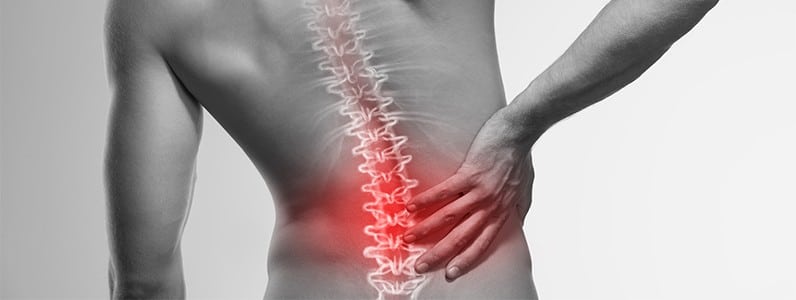
The spine plays an extremely important role in the body as it supports the body’s weight, provides posture while allowing for movement and flexibility, and protects the spinal cord. The spine is made up of 33 individual bones that are stacked on top of each other. From there, the spinal column is an intricate entanglement of smaller bones, muscles, and discs.
The spinal vertebrae, the 33 bones stacked atop each other, can be broken down into different regions of the spine:
The bottom of the spine, or the tailbone area, also has the sacral and coccyx. Each section includes a specific number of vertebrae.
The top 24 vertebrae of the spine are moveable. The cervical spine, the upper portion of the spine, consists of seven cervical vertebrae numbered C1 to C7. The thoracic spine consist of 12 vertebrae, numbered T1 to T12. The lumbar spine consists of five vertebrae, numbered L1 to L5. The sacrum is 5 vertebrae while the coccyx consists of 4 fused bones that make up the tailbone.
Each vertebra has three functional regions. The posterior, back, the anterior, front, and the spinal canal, which is arch-shaped and protects the spinal cord. The anterior is shaped like a drum and bears the weight of the body while withstanding compression. The posterior serves as a framework for muscle attachment.
Between each vertebra is an intervertebral disc. The discs keep your bones from rubbing together. The intervertebral discs have a tough outer ring called the annulus, which is made up of crisscrossing fibrous bands. Inside the discs is the nucleus, a gel-filled center. The nucleus is mainly composed of fluid, which is absorbed through the night and then pushed out as you move about during the day. Over time, the discs can lose the ability to absorb the water and can become brittle and flatten. The loss of fluid absorption is also what can cause painful spinal conditions and back pain.
Facet joints, located on the sides of the vertebral arch, allow the back to move. Each vertebra has four facet joints; two connect to the vertebra above and two connect to the vertebra below.
Ligaments hold the vertebrae together, protect the discs, and stabilize the spine.
The spinal cord runs from the brainstem to the 1st lumbar vertebra; it is approximately 18 inches long. At the end of the spinal cord, fibers separate into the cauda equina, Latin for “horse’s tail,” which is a bundle of spinal nerves and roots.
The spinal cord relays messages between the body and brain, which allow for movement, as well as your sense of touch. Thirty-one pairs of spinal nerves branch off the spinal cord and carry these signals. The spinal nerves are numbered according to the vertebrae where it exists. When you suffer from specific pain in the body, it may indicate issues with specific vertebrae or spinal nerves.
The overview of the spine gives you a glimpse into how much goes into helping our bodies move. Sometimes the body needs a little bit of help, which is when chiropractic care can help.
If you are suffering from back or neck pain, or have been hurt in a car accident, contact a chiropractor at ChiroCare of Florida. Get the treatment you need to get back to a healthy position.
